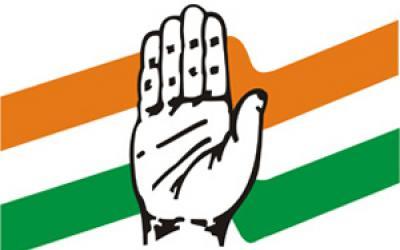“India needs a benevolent dictator.”
I have heard this being said over and over again, over the years.
Usually, the person saying it is a man.
Usually, he is a successful corporate type who is in the habit of driving his team to meet unreasonable goals set by the organisation.
Usually, he doesn’t like to take no for an answer.
Usually, he is looking to encash his ESOPs at the end of the year.
Usually, you will hear him say things like, this year we did Turkey, next year we plan to do New Zealand.
Usually his heart is in the right place. It beats for his country. It wants the country to do well. And in the process, he ends up saying the nonsense that he does.
In some cases, he is a Non-Resident Indian, living in the United States, the oldest and one of the most successful democracies in the world. In some cases, he is someone who has lived through Indira Gandhi’s emergency between 1975 and 1977 and is nostalgic about it.
“You know, trains ran on time,” he says. I don’t know if they did, but at least that is the argument that is offered.
And in some other cases, he opens the argument with the line: “Look at Singapore”.
So what is this Look at Singapore argument? Allow me to explain. As Arvind Pangariya writes in India—The Emerging Giant: “Countries, such as the Republic of Korea, Taiwan, Singapore Hong Kong, and the People’s Republic of China…have attained high rates of growth under authoritarian regimes.”
India on the other hand almost always been a democracy since its independence in 1947. And on top, it has been one of the few countries which has managed to be a democracy almost all along. As Panagariya writes: “Along with Costa Rica, Jamaica, and Sri Lanka, India is only one of the four developing countries to have had democratically elected governments throughout the second half of the twentieth century and beyond…The remaining three countries…are all relatively tiny. The brief period of emergency rule—from June 26, 1975, to March 21,1977—in India may be viewed as representing a break in its democratic tradition.”
The people who argue in favour of benevolent dictators have basically this to say—countries in Asia that have done well, are those which have had autocratic regimes. India lost out because it was a democracy.
As Ruchir Sharma writes in Breakout Nations: “Of the eight countries that quadrupled their incomes between 1950 and 1990, two (Taiwan and Singapore) were ruled by dictators during the entire period, one (South Korea) was ruled by a dictator during most of it, two (Japan and Malta) were democracies throughout the period and three (Thailand, Portugal and Greece) waffled between autocracy and democracy.” China has also had an autocratic regime through its period of economic development through the late 1970s.
This is offered as evidence as to why India would have done much better if it had been run by a benevolent dictator and an autocratic regime. The trouble with this argument is that it looks at just one side of the equation—the countries which have had benevolent dictators and have done well. It doesn’t look at countries, which have had dictators and gone absolutely to the dogs.
The African continent is littered with examples of such countries. Closer to home, there is Pakistan. Look at the mess the country currently is in. Or look at what has happened in a country like Myanmar.
Economist William Easterly has done some interesting research in this area, which he summarises in a research paper titled Benevolent Autocrats. As he writes: “The probability that you are an autocrat IF you are a growth success is 90 percent. This probability seems to influence the discussion in favour of autocrats.”
But that is the wrong question to ask. The question that needs to be asked should be exactly the opposite—if a country is governed by an autocrat what are the chances that it will be a growth success? “The relevant probability is whether you are a growth success IF you are an autocrat, which is only 10 percent,” writes Easterly.
To put it simply—most fast growing nations are ruled by autocrats. Nevertheless, most autocracies do not grow fast. The point being, if the government in a country is being ruled by a dictator, there is no way to figure out in advance, whether he will turn out to be a disaster or be benevolent.
The question is why do so many educated middle class Indian men believe in the idea of a benevolent dictator then? (I know I am stereotyping here, but I have experienced this many times over the years).
I guess what behavioural economists call availability bias is at play here. As Leonard Mlodinow writes in The Drunkard’s Walk—How Randomness Rules Our Lives: “In reconstructing the past, we give unwarranted importance to memories that are most vivid and hence most available for retrieval. The nasty thing about the availability bias is that it insidiously distorts our views of the word by distorting our perception of past events and our environment.”
Air-crashes are an excellent example of this. As Jason Zweig writes in The Devil’s Financial Dictionary: “Flying is among the safest ways to travel, but on the rare occasions when an airplane does crash, the fireball on the runway is broadcast worldwide and burned into the brain of everyone who sees it.”
This leads people to believe that airplane travel is unsafe. But what they don’t realise is that the media does not report about the thousands of planes that land safely every day all over the world. It also does not report the many car crashes that happen all over the world every day, unless a celebrity is involved.
Availability bias comes into the picture with an event being over-reported. As Easterly writes: “One way this can happen are with an event that is over-reported relative to its actual frequency. A common example is that probability of death from murder is overestimated because of intensive coverage of murders by the media relative to other causes of death that are not as newsworthy (e.g. heart disease).”
When it comes to the idea of a benevolent dictator, this phenomenon is at play. Indians who go to countries like Singapore and China, see how much progress the country has made, and come to the conclusion that autocracy leads to economic growth. But these individuals never go to Pakistan, so that they can see that the opposite is also true. Or Myanmar for that matter.
The media with its stories of China’s progress also has a role to play. But then the stories of how much mess dictators have made in Africa, over the decades, never really make it to the Indian press.
The column was originally published in the Vivek Kaul Diary on June 6, 2016




